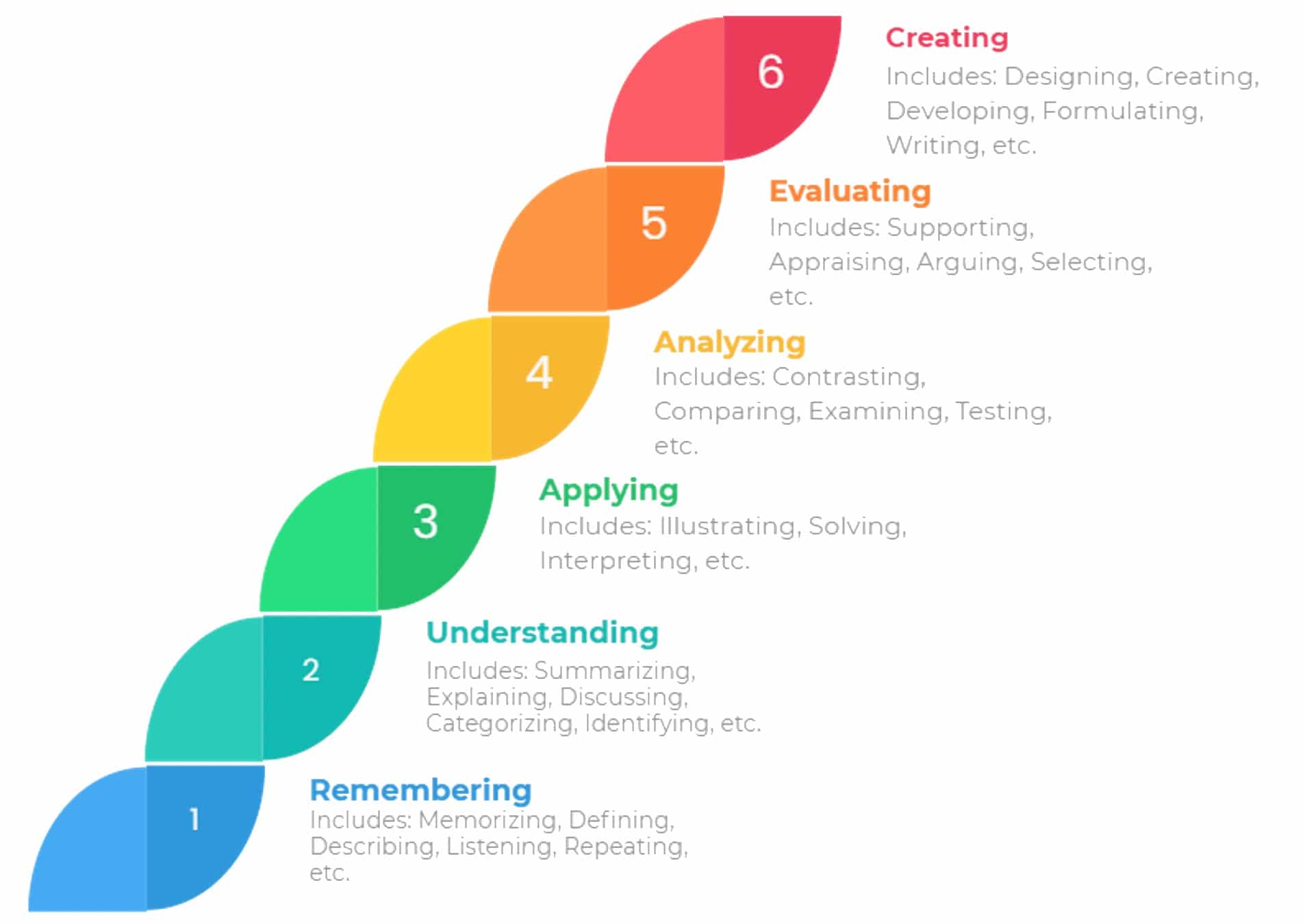Bloom’s taxonomy is a framework originally developed by a committee of educators to assist in establishing an effective curriculum. This framework can also be used by young professionals.
There is a myriad of academic journals from varying fields that illustrate the practicality of the framework in specific situations. Its application stretches beyond the needs of a student. With a little comprehension of the various levels, an individual can improve the way they think and undertake projects. The framework will be particularly helpful in skills-based occupations because it not only gives you the steps to think through a new situation, but it could also be used as a troubleshooting guide to identify where you can improve. When upskilling, using the framework could assist in making the knowledge and skills your own. This can further be supported by questioning yourself during projects. For example, with a higher level of thinking you could complete a more thorough evaluation during a due diligence.
In this post, we will look at how the framework could be used by an individual on a day-to-day basis using the example of a junior accountant recognizing an asset at an SME.
1. Remembering
Memorizing the right answers is where most of us start in our educational journey. This is the level of thinking that we naturally go for first and is likely to have been mastered by most adults. Most people attempt to memorize information that seems relevant or important, but they often stop there. This is why the framework is necessary – to remind you that merely “remembering” may give you knowledge, but it will not give you a deeper understanding.
A junior accountant recognizing an asset at an SME will need to remember that Financial Statements contain Assets, Equity and Liabilities.
2. Understanding
Understanding the intended meaning of information requires connecting the dots. For example, a surgeon who understands the layout of the respiratory system probably will not understand the layout of financial statements. Young professionals tend to develop understanding within their field of study.
The junior accountant will need to understand whether resources should be recognized as assets. In other words, are the resources controlled by the entity as a result of a past event, and do they have the potential to bring about future economic benefits?
3. Applying
Applying entails using your understanding to solve problems. Simply put, you apply your understanding and knowledge to the scenario at hand.
The junior accountant may need to identify whether a recently purchased vehicle used for deliveries by the company is an asset.
- The delivery vehicle will create future economic benefits as it will be used to generate income.
- As the company is actively using the vehicle, it is controlled by the entity.
- The vehicle was purchased in the past.
This would mean that the delivery vehicle is indeed an asset.
4. Analyzing
This level of thinking requires you to use your prior knowledge and understanding to further explore the situation. This is where you categorize, organize and contrast ideas and information in order to understand its relevance and significance, and in order to identify meaningful patterns and relationships.
For example, if the company plans to keep the delivery vehicle for longer than 1 year, the junior accountant would categorize it as a non-current asset and place it under the sub-category of vehicles.
5. Evaluating
Evaluating includes placing a heavy emphasis on judging whether ideas and information are valid, current and of acceptable quality. It entails defending, arguing, selecting, and critiquing. It’s looking at and assessing what you learnt.
Imagine that the company bought four similar vehicles two years ago. The vehicles have so far been depreciated at 20% per year and had annual re-evaluations. Before assigning the same amount of depreciation in the current year, the junior accountant would need to evaluate the previous decision. If it turns out that the four vehicles always get re-evaluated 10% higher after depreciation has been deducted, then it would be clear that the depreciation policy isn’t accurate.
6. Creating
This is the highest level of thinking. It combines all prior understanding, learning and experience to create something completely new.
After realizing that the depreciation policy is not accurate or cost effective, the junior accountant formulates a new depreciation policy by combining their knowledge, understanding, and previous evaluation of the situation.
Conclusion
Bloom’s Taxonomy is a way to increase not only your knowledge of a subject, but also to improve your thinking by being able to understand, apply, analyze and create. By taking the time to understand Bloom’s Taxonomy and starting to implement it, you may be able to achieve greater results not necessarily by taking on a greater work load but rather by shifting your thinking and how you approach new ideas, situations and projects.
Ettienne du Plessis is currently completing his Master of Professional Accounting at Victoria University of Wellington, where he also completed his degree in Accounting and Commercial Law. He is diligently working towards becoming a Chartered Accountant.
